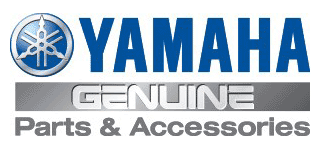
Yamaha Props
Buy Now at our Online Ship Store
Yamaha OEM Props
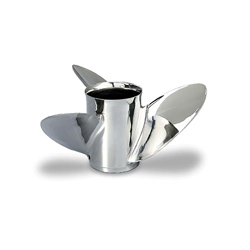 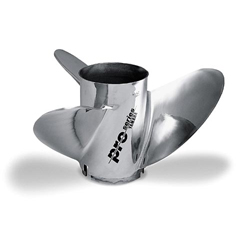
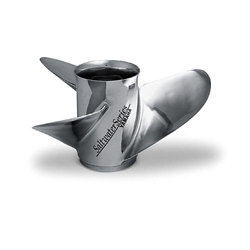
| Yamaha Propellers |
Buy Now at our Online Ship Store
NOTE: Prices & Specifications are subject to change at any time & without notice.
|
Pro Series
150 HP- 250 HP |
$525.00 |
Performance 3 Blade
150 HP-250 HP |
$425.00 |
Pro Series
50 HP-130 HP |
$489.00 |
Performance 3 Blade
150 HP-250 HP |
$425.00 |
Performance XL
150 HP-250 HP |
|
Performance 4 Blade
150 HP-250 HP
|
|
Performance XL 4
150 HP-250 HP |
|
Pontoon Performance
|
|
Reliance Series
F150 HP
|
|
Saltwater Series XL |
|
HS4 High Seas
V6 4S & 200 HP-300 HP 2S |
|
Saltwater Series II
150 HP-250 HP |
$525.00 |
Small Hub Series
60 HP-200HP |
|
TRP for DX150
Rear |
$499.00 |
V-MAX Ventless Series
VX250 |
$425.00 |
TRP for DX150
Front |
$599.00 |
V-MAX Vented Series
VX250 |
|
Black SS
25 Hp-30 Hp |
$399.00 |
| Plastic Dual Trust 2-15 HP, F4-15 |
$65.00 |
Black SS
T25, F30, 40, E48, C40, C50, F40, F50, F60 |
$399.00 |
Aluminum Dual Thrust
25, C25, F25 & 30 |
$75.00 |
Black SS
T50-130 HP |
$399.00 |
| Aluminum Dual Thrust T25 |
$102.00 |
Black SS
FL115 & L130 |
$399.00 |
| Aluminum 2 HP-15 HP/ F4-F15 |
$99.00 |
Black SS
L150-LF225 |
$399.00 |
| Aluminum 25 HP-30 HP |
$99.00 |
Black SS
150 HP-250 HP |
$399.00 |
Aluminum
T25, F30, E48, C40, F40, F50. F60 |
$99.00 |
Aluminum
50HP-130 HP |
$99.00 |
Aluminum
T50, 60 HP -130 HP |
$99.00 |
Aluminum
150 HP-250 HP |
$99.00 |
| |
|
Aluminum
L150-LF225
|
$99.00 |
| Yamaha Prop Accessories |
| Item |
Description |
Part Number |
Price |
| Prop Wrench |
Yamaha V4-V6 O/B |
MAR-PROPW-RN-CH |
$19.95 |
| Prop Wrench |
Yamaha TRP |
65N-28161-00 |
$31.95 |
| Prop Nut Kit |
Yamaha 40-P50, C40 & C55 |
6H4-W4599-00 |
|
| Prop Nut Kit |
Yamaha P60-90 & C85 |
6H1-W4599-00 |
|
| Prop Nut kit |
Yamaha V4-V6 |
6G5-W4599-00 |
|
| |
|
|
|
| Buy Now at our Online Ship Store |
| NOTE: Prices & Specifications are subject to change at any time & without notice. |
| Yamaha Prop Descriptions and Information |
| Yamaha Performance Prop Bullitens |
You may buy any of these items by calling 1-866-868-7151
or by Email at boatparts@boatsunlimitedny.com
or visit our Online Ship Store |
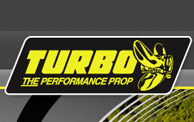 |
| Turbo Prop Selection |
Turbo® Propellers Prop 101
This section was prepared to give you a bit more 'in-depth' information about propellers. Rather than put these terms in alphabetical order, we thought it might be better to group these definitions as they are commonly (mis)associated, such as "diameter vs. pitch" and "ventilation vs. cavitation".
It All Comes Down to This
Horsepower does you no good if you can't effectively transfer it to the water. That's why the right propeller is so important. Propellers can be likened to automotive tires. There are different designs, sizes and shapes to allow proper selection of the type and model that meets the specific performance requirements of the particular application.
Likewise for propellers; from their size, shape and the number of blades to a host of other variable criteria, no one type or style of propeller is perfect for all boats and boating applications. A propeller represents a system of trade-offs to find the right prop for your particular application, where the phrase "too much of a good thing can hurt you" rings true. Although there's no "magic bullet" when it comes to choosing the correct propeller, the information presented here will help get you closer to maximizing the performance of your particular boat and your typical use of that boat.
Keep in mind that there's an important distinction between "high-performance" and "high-speed" propellers. High-performance propellers have certain characteristics that allow the propeller and boat to give maximum performance in acceleration, mid range and top speed. A high-speed propeller is designed to perform and operate most effectively in those applications where top speed is the priority and acceleration and ability to carry a load is less important. Certain designs and styles of propellers offer a "middle ground" between these two extremes.
The Basic "What's & Why's" of Propellers
Ventilation
Ventilation occurs when air is drawn in around the propeller blades from the water's surface or from the engine's exhaust gases. Normally, this causes a gain in RPM, but a loss of speed, since the propeller blades are not biting "clean" water and become increasingly inefficient. Other times ventilation can be beneficial by helping the propeller have a "controlled slip" on initial acceleration, thus generating more RPM at a lower engine speed, allowing horsepower to be developed more quickly and aid in acceleration in certain applications. This is intentionally done through the strategic placement of exhaust vents or by using an "over and thru-hub" style propeller design. These systems are normally found only on high-performance props.
Cavitation
Cavitation is caused when a propeller, under certain conditions, is passing through the water at a sufficient speed to cause a low pressure area to form on the blade surface. The resulting low pressure can cause the water to boil in that specific spot, a condition known as cavitation, because of the lower boiling point of water at lower pressure. When this occurs, water vapor is formed and the water vapor bubbles move across the propeller blade surface. As the water vapor slows while passing across the blade, it will enter an area of higher pressure. If the pressure is no longer low enough to support "boiling" of the water the water vapor bubbles "pop" and return to water. This action can cause a "cavitation burn" on the propeller's surface at the point on the blade where the low pressure and the higher pressure areas meet. This action, if left unchecked, can erode the metal, discolor the propeller blade surface, chip away at any propeller paint and actually deteriorate the blade's surface. Cavitation is most often caused by imperfections on the leading edges of a propeller's blades, such as a dent or a ding, a poor blade design for the application, or any thing that causes a continuous disturbance in the water flow ahead of the propeller or gear case.
Pitch 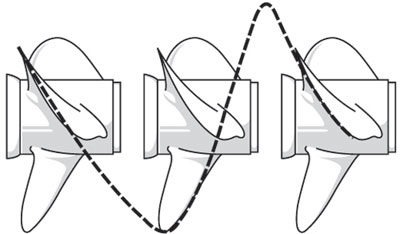
Pitch is the distance, in inches, a particular prop would theoretically travel in one full revolution, as if traveling through a solid. A lower pitch will have greater acceleration or pushing power but with a lower top speed, while a higher pitch propeller will provide less acceleration or pushing power but a greater potential for higher top speeds.
Too much pitch can cause an excess load on the engine and prevent it from reaching its ideal wide-open throttle (WOT) RPM range as specified by the engine manufacturer, thus reducing both top speed and performance. Too little pitch will result in the engine regularly exceeding its manufacturer-specified WOT RPM (if the engine WOT RPM is below it's stated range, it's referred to as "lugging" the engine; if above it, it's referred to as "over-revving" the engine). Sustained operation in either of these situations can cause catastrophic damage to the engine.
In short, you want a propeller that allows your engine to reach the upper portion of the WOT range specified by the manufacturer, with a normal-to-heavy load.
You many also hear the terms "flat pitch" and "progressive pitch". Flat pitch means just that the water leaves the blade at the same pitch (or distance) measurement as when it first came in contact with it (for example 19" of pitch from the leading edge of the prop blade to the trailing edge). Conversely, progressive pitch means that the pitch may measure lower at the leading edge of the blade (say 19", which would be better for acceleration) and have a higher pitch angle toward the trailing edge (say 23", which would be better for top speed). The pitch of these type propeller blades are be progressively curved, hence the term "progressive pitch".
Slip
"Slip" is expressed as a percentage, and represents the amount of "wasted" energy a particular prop generates. Technically, it represents the difference in the actual distance traveled in one full propeller revolution verses the expected distance traveled in one propeller revolution, and is expressed as a "percentage of inefficiency" of the propeller in the particular application in which its measured. Slip can be caused by an incorrect propeller blade design, too small a propeller diameter, to much positive trim of the engine while underway or an incorrect engine mounting height. Excessive slip causes the propeller to operate less efficiently and performance will suffer, as will fuel economy and top speed.
Hole Shot
"Hole shot" refers to rapid acceleration of the boat, from a standing rest or very slow speed until the boat is "on-plane" and riding on top of the water. This is when the engine works its hardest, so it is important to have the right propeller for the job. A propeller that offers too fast of a hole shot will typically yield low top speed and may cause the engine to exceed its specified WOT RPM range, while a propeller that has too slow of a hole shot typically has poor acceleration performance and may not bring the engine up to its desired WOT RPM range. Either of these scenarios cause undue strain on the engine and reduce its overall performance and fuel efficiency 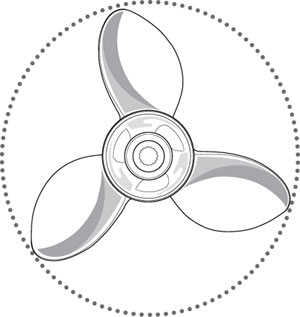
Propeller diameter means the width of the circle as defined by the blades as the propeller spins. The diameter of a propeller is dictated by its design and intended use as well as the size of the gear case and overall speed considerations. Higher engine mounting heights and/or heavier boat weights typically call for larger diameter propellers. Smaller diameter propellers are typically used for lighter-weight boats, engine mounting heights where the propeller is lower in the water, or where an increase in engine RPM is desired. Propeller diameter varies between models and is specifically designed into each. The optimum diameter is determined by the manufacturer during the initial design, development, and testing phase of each propeller model.
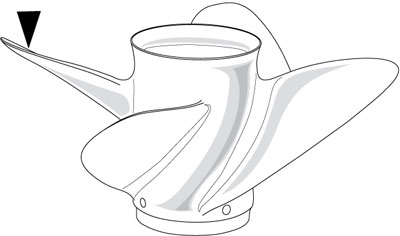
Cup is the small curved lip along the trailing edge of each propellers blade
and extending to each blade's tip. Different prop models have different amounts
of cup, depending on their intended application and the performance
characteristics they're designed to provide. Cupping keeps water on each blade
longer, allowing better 'bite'. As cup increases it helps reduce ventilation and
propeller slippage, can allow for higher mounting heights, and helps provide
greater bow lift. Too much cup on a propeller, however, can cause excessive
steering torque and too much bow lift. This scenario can limit the engine's
ability to develop and maintain proper RPM for a certain pitch in specific
applications.
Size
Propeller sizing is characteristically expressed in two numbers, diameter and pitch, and each is expressed in inches. The diameter of the propeller is the first number and the theoretical pitch measurement is the second number. So a propeller that says 14" x 17" is 14" in diameter and 17" of pitch. This same propeller may also be described as a 14x17x3 which would be a 14" diameter x 17" pitch in a 3 blade design.
Rake
Rake is the angle of the blades in relation to the propeller's barrel (the center tube), and is expressed in degrees. A high-rake propeller is best-suited for high speed applications, particularly those utilizing high engine mounting heights where ventilation or cavitation is more likely to occur. Higher rake can also increase bow lift and propeller efficiency, resulting in better performance. Too much rake, however, strains the engine, decreases hole shot, and can produce negative performance and handling results. Basic propellers usually have 5-20 degrees of rake. Higher performance progressive pitch propellers will usually have 20 to 30 degrees of rake. Propellers typically operating in ventilated or disturbed water can enjoy performance benefits from having higher rake. Gear Ratio
Gear ratio on a marine engine refers to the gears used in the lower unit, and is always expressed in reference to one (1), such as 2:1. In this instance, it means that for every 2 revolutions of the drive shaft, the lower unit will produce 1 revolution of the prop shaft.
The gear ratio for a certain engine is determined by the manufacturer at the time of the engine's development, specific to its intended use and application. It's important to choose a propeller that's correct for the specific gear ratio your engine has and the application in which you use it. The correct propeller should allow the engine to operate within the manufacturers WOT RPM specifications under the loads and conditions in which the boat is being used. Pitch is the most, but not only, influential factor in determining the correct propeller for the application and gear ratio. Blade Geometry
Blade geometry refers to the actual shape of the blade (or 'ear'). By manipulating the blade's shape, diameter, and pitch progression; different performance characteristics are created for each different type and style of propeller. That's why no one prop is perfect for every application. By design, different prop styles and models create different performance characteristics. Choosing the best one for the job allows a boat and engine combination to achieve the desired performance results. Blade Surface Area
Blade surface area refers to the total surface of the propeller blade. This is important because the more blade surface area a prop has, the more water it pushes, but it can also create more drag on the engine. More blade area can give you better hole shot and allow a boat to remain on plane at lower engine speeds, but too much blade area can restrict the RPM that the engine can develop and cause boat handling issues. As mentioned elsewhere in this document, operating the engine outside its recommended specifications makes the engine work harder or faster than it has to; reducing efficiency, fuel economy and possibly damaging the engine. Lower Unit (Gearcase) Size
Different engine models have different sized and shaped lower units. The "size" of your engine's lower unit is the measurement of the diameter of the gearcase "bullet" that being the round portion facing the rear of the boat. Propeller models are designed with gear case dimensions and requirements in mind during the manufacturers' propeller development process. Propeller diameter remains a key dimension in proper performance of any propeller. Most propellers are sized to fit the gearcase diameter precisely so that all of the engine's exhaust gases are passed directly through the propeller, while some specialty props are designed have a smaller 'barrel tube' which allows the exhaust gases to flow over and through the "barrel", thus generating beneficial RPM lower in the engine's power curve. These two design scenarios are specifically for performance purposes.
Lower Unit (Gearcase) Shape
Gearcase shape is normally only considered in very high-speed and/or racing applications, but it demonstrates that the shape of your lower unit is important in selecting the correct propeller, too. The more 'blunt' the leading edge of a gearcase is, and the faster the unit (boat) is traveling through the water, the farther out water spreads when it hits the leading edge of the gearcase. If the water is spread out beyond the tips of the blades, the prop will experience extreme ventilation causing a drastic loss of performance. This is commonly known as 'gearcase blowout'. Conversely, too much angularity to the leading edge of the lower unit will make the lower unit into too much of a 'rudder' and cause the engine and boat to 'dart' excessively, leading to improper high-speed running and handling characteristics. Again, this is not normally a concern to most boaters. Number of Blades
Three-bladed is by far the most common propeller design for today's boat engines. The three blade design offers good performance and efficiency with the best "cost vs. benefit ratio" for most boating applications. Four-blade propellers are used to enhance performance where increased engine heights are required, faster acceleration is needed or where the boat is being operated in rough water conditions. Additionally, four-bladed propellers can increase overall performance in applications where heavier boats and/or loads are typically being experienced. The four-bladed design can also enhance the ability to use more positive trim angle without "slip" and cause the boat to have increased bow and/or stern lift. However, four blades also mean increased drag on the engine, lower top speeds, and different handling characteristics. It's beneficial to note that if a three blade propeller is operating within the proper WOT RPM specification, a four-bladed propeller must normally be one size pitch less in order to accurately maintain the correct WOT RPM.
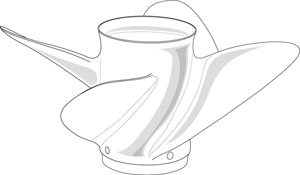
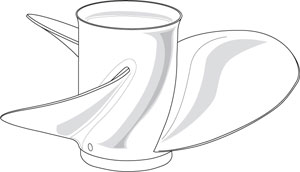
Featured Products
|
| TURBO 3 BLADES |
| Turbo 1 Series |
Lightning Series |
TXP Series |
Pontoon 1 Series |
| HOT SHOT |
Quest |
Vector |
OFFSHORE II |
| TURBO 4 BLADES |
| Ultima 4 Series |
Offshore 1 |
2+2 TH |
Fusion 4 |
| TXP OT-4 |
|
Turbo Prop Selection |
| Buy Now at our Online Ship Store |
You may buy any of these items by calling 1-866-868-7151
or by Email at boatparts@boatsunlimitedny.com
or visit our Online Ship Store |
NOTE: Prices & Specifications are subject to change at any time & without notice.
Shipping Cost
 
 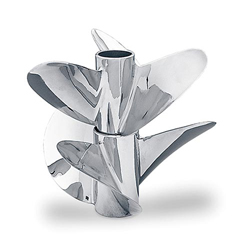
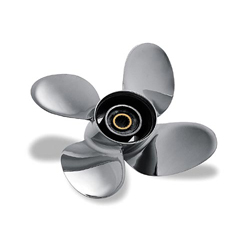 
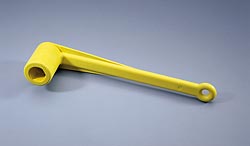
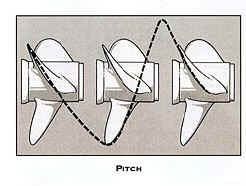
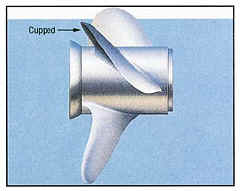 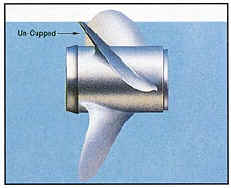
PROPELLERS
The propeller is one of the most important items on your boat. The choice of a propeller can significantly affect the performance of your boat in terms of top speed, acceleration, fuel economy, and engine life, particularly in higher horsepower and higher potential top speed applications.
Although there are basic propeller selection guidelines, the best propeller for your boat can only be determined after trying various propellers. Your dealer or the boat manufacturer may have already tested different propellers with your boat/motor combination, or with a similar one, which determined the "best" propeller. These tests provide you with an excellent starting point. Remember, however, that your operating conditions and requirements could be different than the conditions during testing, so a different propeller may actually be better for you.
To pick a propeller for your boat follow the procedures below (also see Propeller Basics):
PROPELLER SELECTION
Propeller Series
Choose a propeller from the right Propeller Series for your engine. A propeller designed to fit a large V6 will not physically fit a mid-size engine, The propeller selection charts in the following pages are grouped by the engine groups that can physically use the same propeller.
Propeller Type
Choose the type of propeller material and construction which meets your needs. Often this means finding the best balance between cost and the performance level desired. Aluminum propellers are less expensive than Steel propellers, but generally deliver lower performance and aren't as durable. Propellers designed for specific applications, like the Saltwater Series props, are often highly polished stainless steel and usually cost more and produce even better performance than conventional steel types. See Propeller Types.
Expected Boat Top Speed
The expected top speed for your boat can usually be determined by asking the dealer or boat manufacturer. Note that some boat speedometers produce optimistic (higher than actual) speed readings. The Yamaha multifunction digital speedometer is one of the most accurate speedometers available and is a good source as a speed reference.
Speed Range
Choose a propeller from the chart that lists your boat's expected top speed near the maximum of the speed range.
The propeller you select from the charts using these guidelines should be a good starting point for further testing. Generally the propeller selected should produce engine speeds near or at the maximum recommended rpm range. This will produce less strain on the engine and better performance when additional load is added to the boat, especially as the boat age
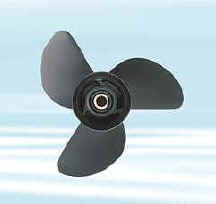
Diameter
PROPELLER BASICS
Propeller Size
Referred to by a series of two numbers, such as 14 x 17. These numbers correspond to the diameter and to the pitch, respectively. Generally the second number, the pitch, is the most important number.
Pitch
Pitch is described in terms of inches and is the distance the propeller would travel during one full revolution without slippage. Most pitches fall between 5 and 35 inches.
To understand pitch, visualize the outboard mounted on the stern of the boat, looking at the propeller from the port or starboard side. The angle of the blade in relation to the hub determines how much pitch the propeller has. A blade that was exactly perpendicular to the hub (90° from the prop shaft) would have zero inches of pitch. A shallow angle produces a low number of inches of pitch. The effect of low pitch is similar to low gears in a car's transmission: greater low speed pulling power and acceleration, with low top end speed. A propeller with high pitch provides a greater top-end speed but reduced low-end performance, similar to the car's higher gears. Typically, increasing the pitch by 2" with the same type propeller will drop engine speed by approximately 400 rpm. The reverse is also true.
Even though a boat/engine combination may be able to use a high-pitch propeller, choose a lower pitch if a heavy load use is expected, such as pulling a water skier
Diameter
Diameter is twice the distance from the centerline of the hub to the tip of blade as the propeller rotates, or the width of the circle described by the blades. Here are some points to consider when choosing the propeller diameter:
# Smaller diameter propellers have reduced drag and perform better at high speed.
# The propeller must physically fit the specified outboard.
# Larger diameter demands a higher horsepower.
# Typically, a larger diameter propeller allows for higher mounting heights because the propeller reaches deeper into the water. Therefore, if you have a 225 hp outboard on a large, heavy boat, a good choice would be a 15-3/4 x 13 prop. The same engine on a light, fast bass boat would be better fitted with a 14-1/2 x 25 prop.
Cup
The small curved lip on the blade tip and trailing edge is the cup. Cupping permits the prop to get a better bite. It reduces ventilation (propeller slip caused by air on the surface of the blade) and slippage, which allows you to mount your motor higher on the transom for more speed and less drag. You can also trim out farther for greater bow lift.
Rake
The rake is the angle the propeller blades are mounted at in relation to the centerline of the hub and 90 degrees from the pitch angle. During operation a propeller with a high rake angle will tend to hold the water on the blade at high mounting heights and therefore be less likely to ventilate. A high rake angle will also produce thrust that tends to pull the stern down and lift the bow of the boat.
Number of Blades
Some propellers have three blades, while others have four. Which should you chose? Generally, a 3-blade propeller provides good performance in most circumstances. A 4-blade propeller, however, can provide better performance in rough water or with high mounting heights (such as Flats boats). This is because a 4-blade propeller has more blades to hold the water when air may be present in the water, which is more common in rough water or with a high engine mounting height.
Keep in mind that the load on the engine is determined by the total blade area and the pitch of the blade. A 4-blade propeller will increase the load on the engine compared to a 3-blade propeller. To compensate for this, a 4-blade will require a slightly smaller diameter or a higher engine mounting height than a comparable three-blade propeller, or special design. For example, the Yamaha Performance Series 4-Blade propellers for the 150hp and up have a special design using a smaller exhaust tube than normal for a V6. This is done to allow exhaust gases to pass between the propeller hub and the gear case during low speed acceleration, reducing the effective blade area and improving acceleration.
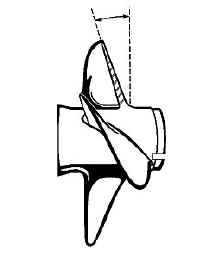
 Back Back
Yamaha Prop Descriptions and Information
Propellers
Yamaha Parts and Accessories
Yamaha Sterndrive Parts
Yamaha Outboards |